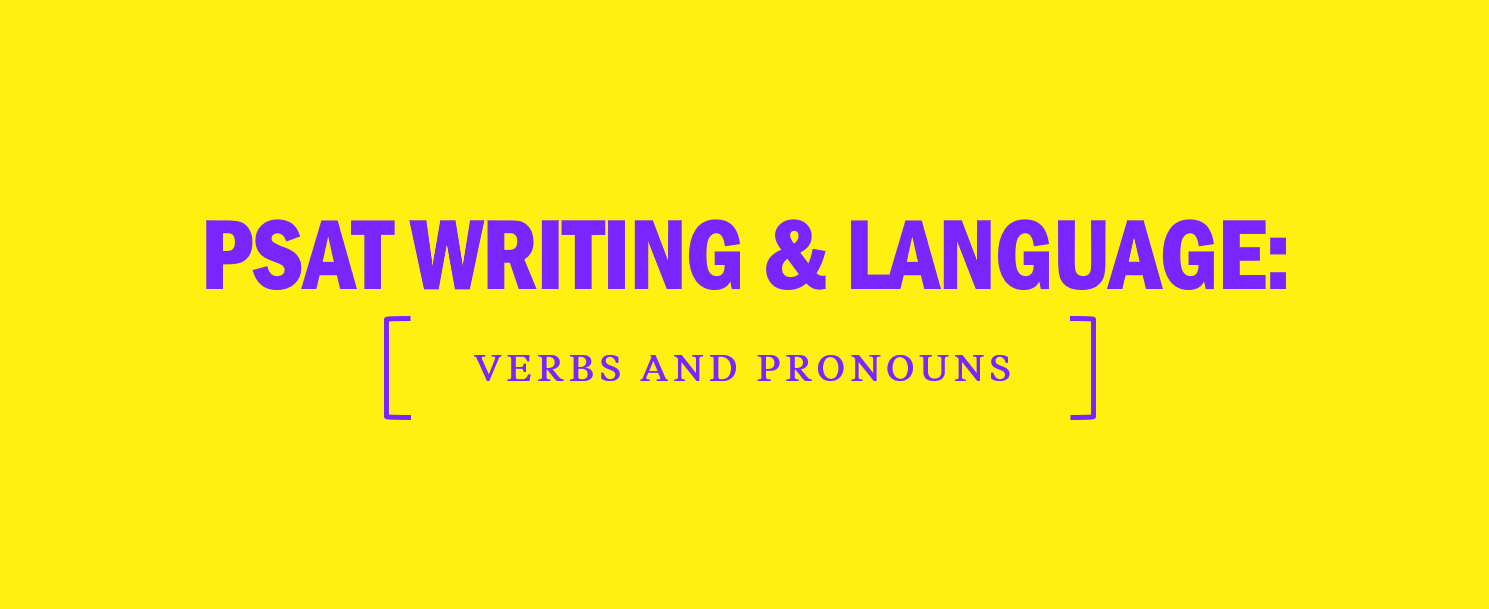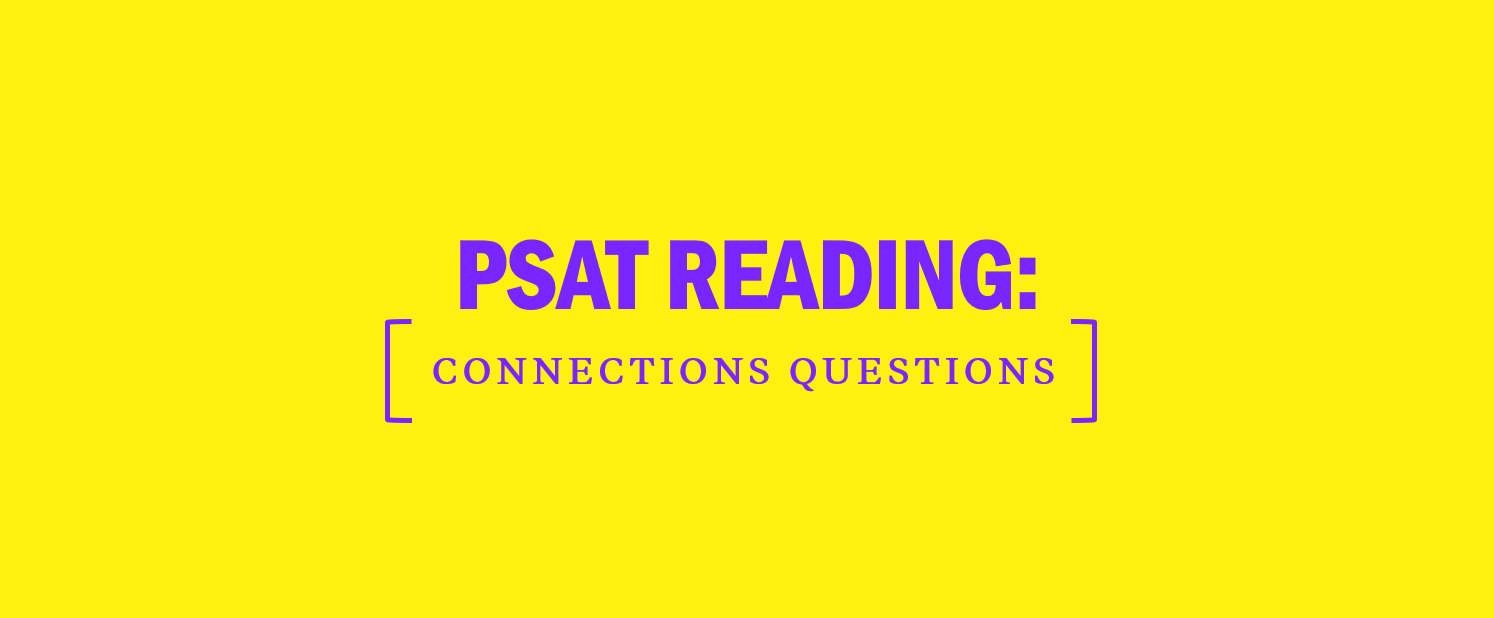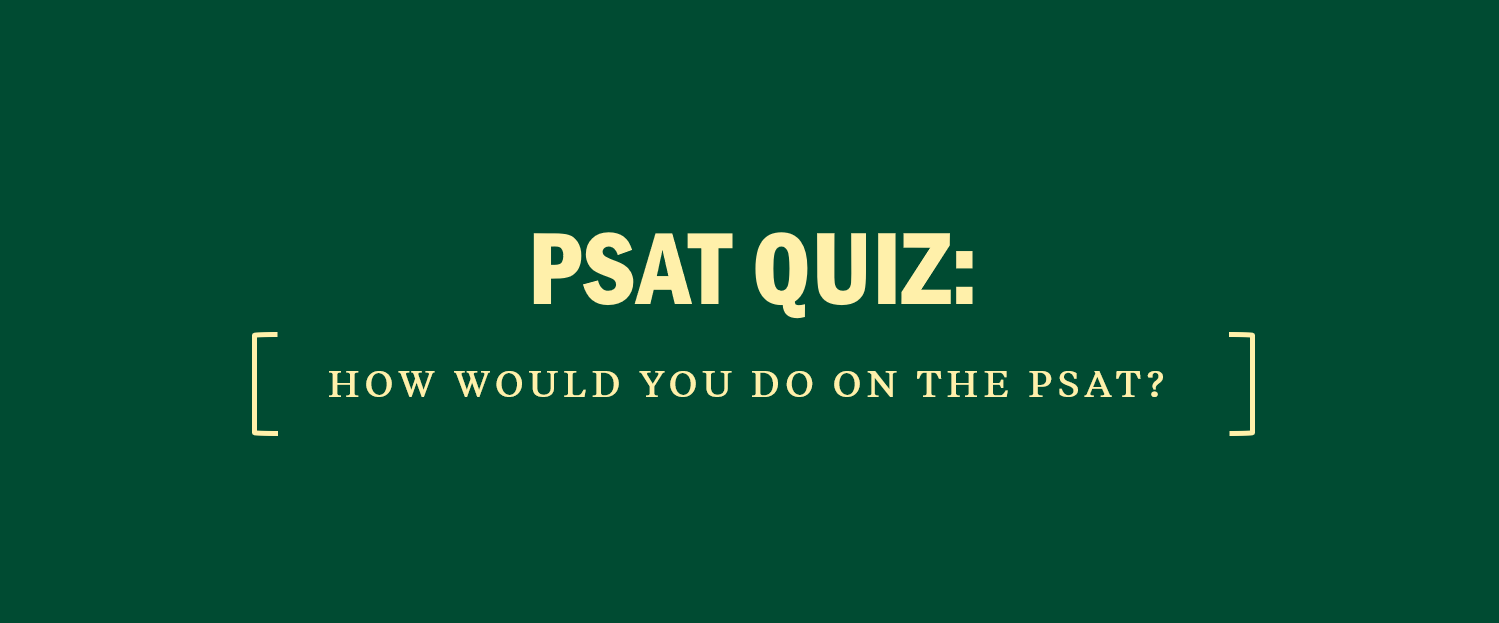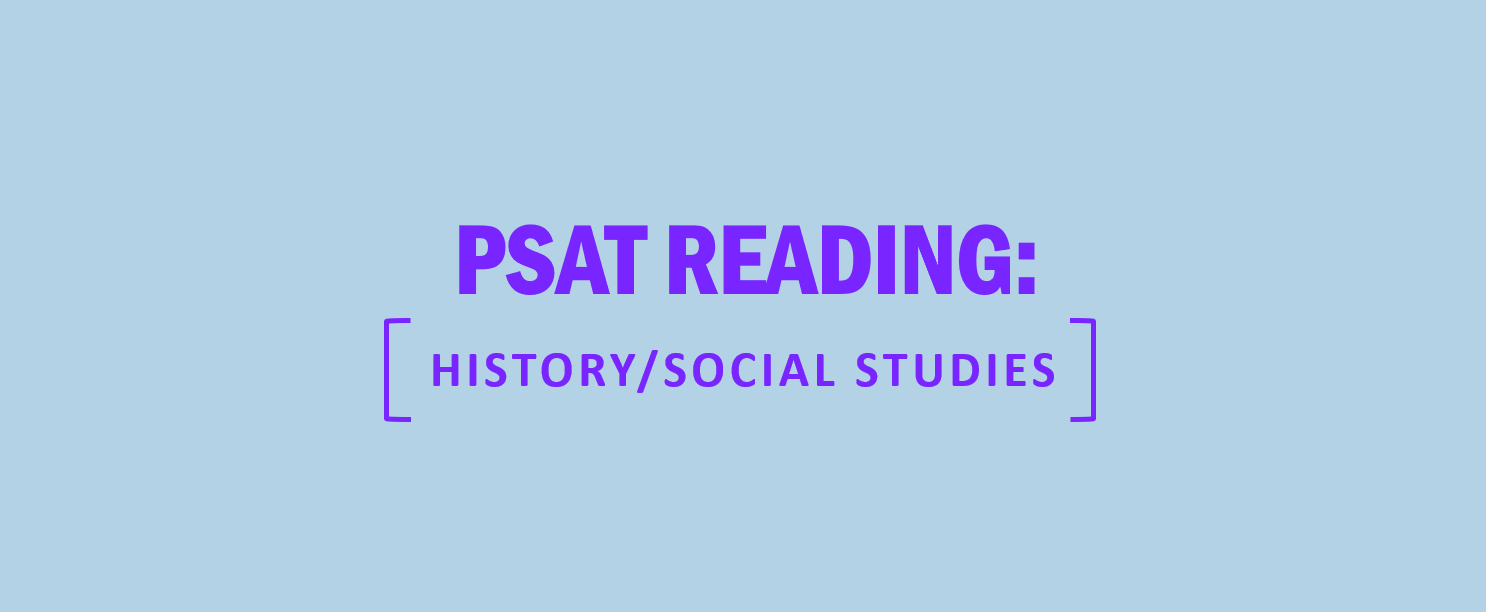PSAT Writing and Language: Verbs and Pronouns
On the PSAT Writing & Language Test, you will be asked to identify and replace unnecessary shifts in verb tense, mood, and voice. Because these shifts may occur within a single sentence or among different sentences, you will need to read around the underlined portion to identify the error.
Verb Tense, Mood, and Voice
In questions about shifts in construction, the underlined segment must logically match the tense, mood, and voice in other parts of the sentence. Verb tense places the action or state of being described by the verb into a place in time: present, past, or future. Each tense has three forms: simple, progressive, and perfect.
| Present | Past | Future | |
| Simple: Actions that simply occur at some point in time | She studies diligently every day. | She studied two extra hours before her math test. | She will study tomorrow for her French test. |
| Progressive: Actions that are ongoing at some point in time | She is studying today for her math test tomorrow. | She was studying yesterday for a French test today. | She will be studying tomorrow for her physics test next week. |
| Perfect: Actions that are completed at some point in time | She has studied diligently every day this semester. | She had studied two extra hours before her math test yesterday. | She will have studied each chapter before her physics test next week. |
On Test Day
Shifts in verb tense are grammatically incorrect unless warranted by the context of the sentence or passage.
Mood
Grammatical moods are classifications that indicate the attitude of the speaker.
| Description | Example | |
| Indicative Mood | Used to make a statement or ask a question | Snow covered the moonlit field. |
| Imperative Mood | Used to give a command or make a request | Please drive carefully in the snow. |
| Subjunctive Mood | Used to express hypothetical outcomes | If I were at the library, I could find the book I need. |
Voice
The voice of a verb describes the relationship between the action expressed by the verb and the subject.
| Description | Example | |
| Active | The subject is the agent or doer of the action. | The carpenter hammered the nail. |
| Passive | The subject is the target of the action. | The nail was hammered by the carpenter. |
Expert Tip
On the PSAT, the active voice is preferred over the passive voice.
Pronoun Person and Number
Pronouns replace nouns in sentences. They must agree with the noun they are replacing in person and number. The PSAT will test your ability to recognize and correct inappropriate shifts in pronoun usage.
| Pronoun Person and Number | |||
| Person | Refers to | Singular Pronouns | Plural Pronouns |
| First person | the person speaking | I, me, my | we, us, our |
| Second person | the person spoken to | you, your | you, your |
| Third person | the person or thing spoken about | he, she, it, him, her, his, hers, its | they, them, theirs |
| Indefinite | a nonspecific person or group | anybody, anyone, each, either, everyone, someone, one | both, few, many, several |
Remember!
Do not shift between “you” and “one” unnecessarily. “You” refers to a specific person or group. “One” refers to an indefinite individual or group.
PSAT Writing and Language Practice Questions: Sentence Structure
Let’s look at the following Writing & Language passage and questions. After the passage, there are two columns. The left column contains test-like questions. The column on the right features the strategic thinking a test expert employs when approaching the passage and questions presented.
PSAT Writing and Language Practice Question: Explanations
| Questions | Strategic Thinking |
| 1. A. NO CHANGE B. have taken C. had taken D. took |
Step 1: Read the passage and identify the issue What is the issue? The verb is in a different tense. When can a writer shift tense? Only when there is a logical reason to do so. What reason does this writer have? None; the earlier verbs are in the simple past tense. What does the simple past tense tell you? That the action occurred at some point in the past. Step 2: Eliminate answer choices that do not address the issue What answer choice(s) can you eliminate? Eliminate (A), (B), and (C) because they are not the simple past tense. Step 3: Plug in the remaining answer choices and select the most correct, concise, and relevant one What is the answer? Choice (D) |
| 2. A. NO CHANGE B. enhance C. add enhancement D. be ensuring enhancement |
Step 1: Read the passage and identify the issue What is the issue? Verb phrases must be parallel in structure. Which verb phrase does the underlined segment need to match? “Rather than degrade” Step 2: Eliminate answer choices that do not address the issue What answer choice(s) can you eliminate? Eliminate (C) and (D) because neither “would add enhancement” nor “would be ensuring enhancement” matches “would degrade.” Step 3: Plug in the remaining answer choices and select the most correct, concise, and relevant one What is the answer? Choice (B) |
| 3. A. NO CHANGE B. by preferring C. preferring D. they preferred |
Step 1: Read the passage and identify the issue What is the issue? The sentence is a run-on. How do you know? A comma separates the two clauses, but they can each function as a complete sentence. Step 2: Eliminate answer choices that do not address the issue What answer choice(s) can you eliminate? Eliminate (B) because it includes “by,” suggesting that the writers’ preferences caused something. Eliminate (D) because it does not correct the run-on. Step 3: Plug in the remaining answer choices and select the most correct, concise, and relevant one What is the answer? Choice (C) |
Previous: PSAT Writing and Language: Sentence Structure
Next: PSAT Math Strategies and Linear Equations






